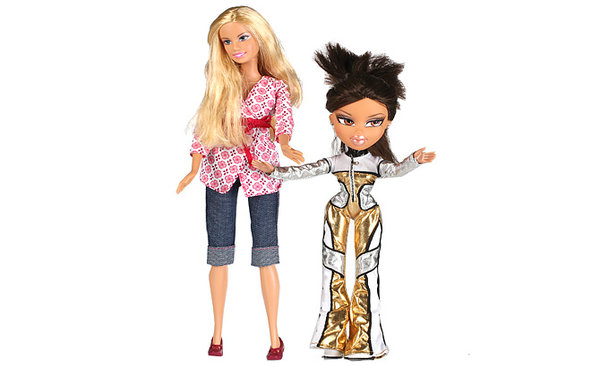
In the 70s it was Pepsi versus Coke. The 80s saw Virgin Atlantic take on British Airways. In the 90s it was own-label Puffin against manufacturer brand Penguin. Now, we have Bratz versus Barbie.
The latest battle, like its predecessors, is a fascinating story of competing interests about to spill over into the courtroom, as Mattel accuses Isaac Larian, chief executive of MGA, the company that created Bratz dolls, of ‘stealing’ the Bratz design. Mattel claims that it was created by a former employee who went on to work for MGA. The category might be girls’ fashion dolls, but the struggle could not have higher stakes.
Larian believes his brand has supplanted the market leader, and he has the consumer insights to prove it. ‘When we ask kids: How old are Bratz Dolls? They think they are teenagers. When they look at Barbie they say, “old” and “it’s Mum’,” he says.
No one can accuse Larian of failing to deliver on the contemporary positioning of his Bratz dolls. They have skimpy clothes and oversized features, such as huge almond eyes and pursed, full lips. The characters have eschewed ambitious social goals for a simple philosophy – ‘a passion for fashion’. So far, this is working; Bratz has outsold Barbie in the UK for the past four years.
For most of the past five decades, Barbie has reigned supreme in the hearts of little girls. In the US, 90% of young girls own at least one Barbie. However, as good marketers know, nothing breeds branding trouble like consistent, unchallenged success.
For starters, there is the problem of keeping the brand youthful as generations of little girls move into, and out of, the target market. Keeping Barbie relevant to the ideals of nine-year-olds in 2008 is very different from creating the positionings that appealed to her mum or her grandmother.
One of the great paradoxes of branding is that you must keep changing to remain consistent, and Mattel appears to be losing the struggle to keep Barbie contemporary.
Chuck Scothon, vice-president of girls’ products at Mattel, believes Barbie’s values of ‘courage, inspiration and imaginative play’ are superior to the ‘shallow fun’ of Bratz. ‘If Barbie reminds some girls of mothers, I can’t think of anything better. One of the most important jobs a woman can take is being a mum,’ he says. This may make sense to a 40-year-old marketer, but nine-year-old girls just want to look cool.
Another problem for Barbie is that she was created in the mold of the 50s archetypal, idealized woman: blonde, blue-eyed and impossibly slim. The fact that Bratz dolls began life in 2001 has given their DNA more global origins. Larian is very conscious of this.
‘I don’t think an African American girl, or a girl with a Middle-Eastern ethnic background, or a Latin girl, wants a blonde doll. They want one that resembles them,’ he says.
Half a century of market dominance has left Mattel ill-equipped for competition with an aggressive, contemporary market entrant. It took Bratz barely three years to make major inroads into Barbie’s leadership, and recent publication has brought to light an internal email sent by a senior Mattel executive in 2004, lamenting that the company had been ‘out-thought and out-executed’ by MGA. The email concluded that ‘the Barbie business is in serious decline’.
Mattel’s response to the situation is along the lines of ‘if you can’t beat them, sue them’. Barbie’s last hope is not Ken but John (Quinn), the prosecutor now making the case for her against Bratz in court.
30 SECONDS ON … BARBIE vs BRATZ IN THE COURTROOM
– Mattel’s case against MGA began late last month in California. Mattel attorney John Quinn began proceedings by asking how MGA could ‘suddenly, overnight, become one of the most innovative toy companies in the world’. He went on to accuse MGA of stealing the idea for Bratz from a design that had originated at Mattel.
– Mattel is fighting for a share of the estimated $500m (£255m) a year that Bratz is generating for MGA. The money will help to offset a downturn in sales at Mattel; Barbie’s Q1 sales slipped by 12% in the US this year, and this trend looks likely to continue for the rest of 2008.
– MGA’s case rests on the argument that the Mattel designer in question, Carter Bryant, first had the idea for Bratz in 1998, some eight months after he left Mattel’s employment. MGA has also counter-sued Mattel on the basis that the Barbie is a copy of the Bratz doll.
– The case is likely to drag on for at least two months. If the losing party lodges an appeal, a final verdict will not be reached before 2009.
The Blake Project Can Help: The Brand Positioning Workshop
Branding Strategy Insider is a service of The Blake Project: A strategic brand consultancy specializing in Brand Research, Brand Strategy, Brand Licensing and Brand Education




